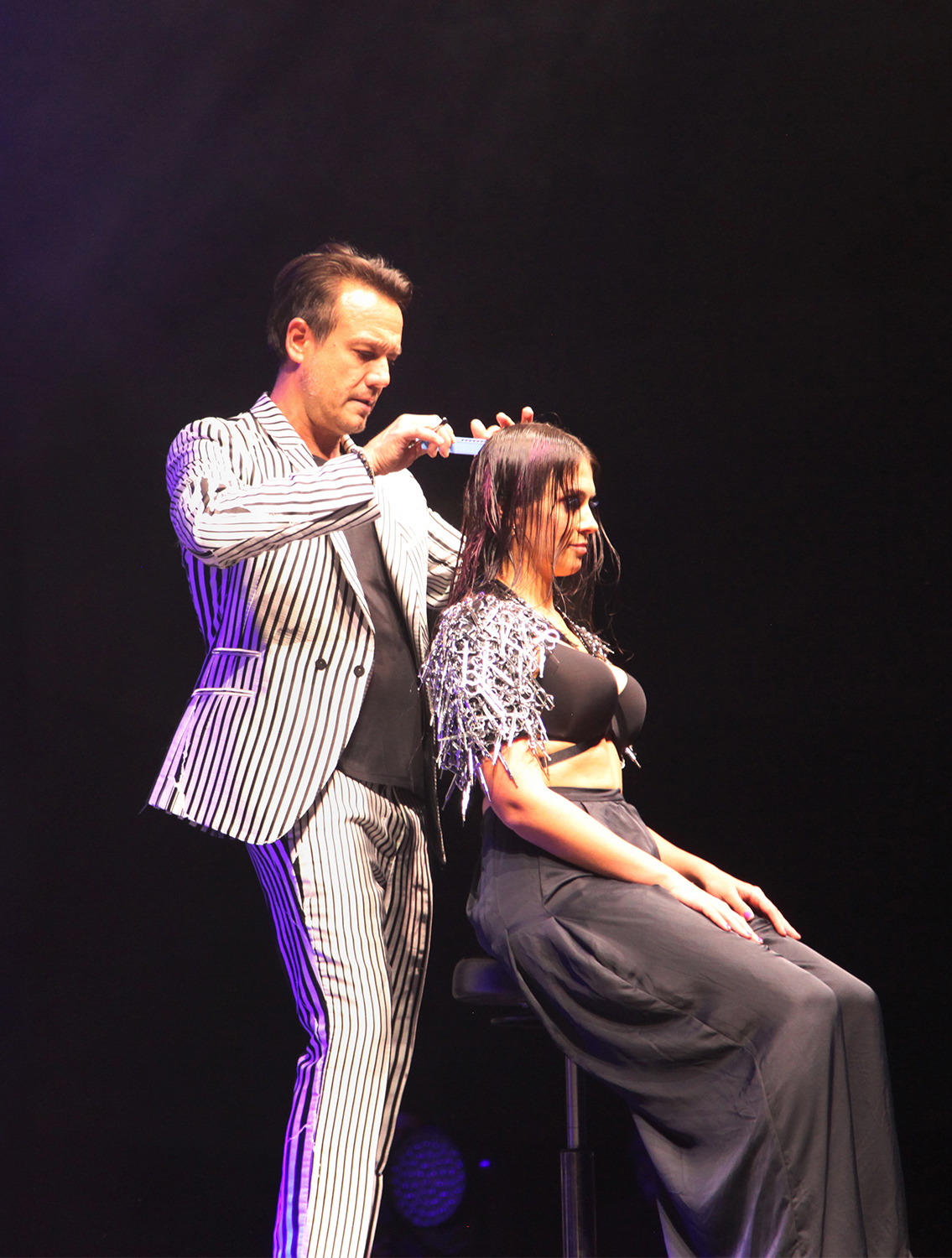
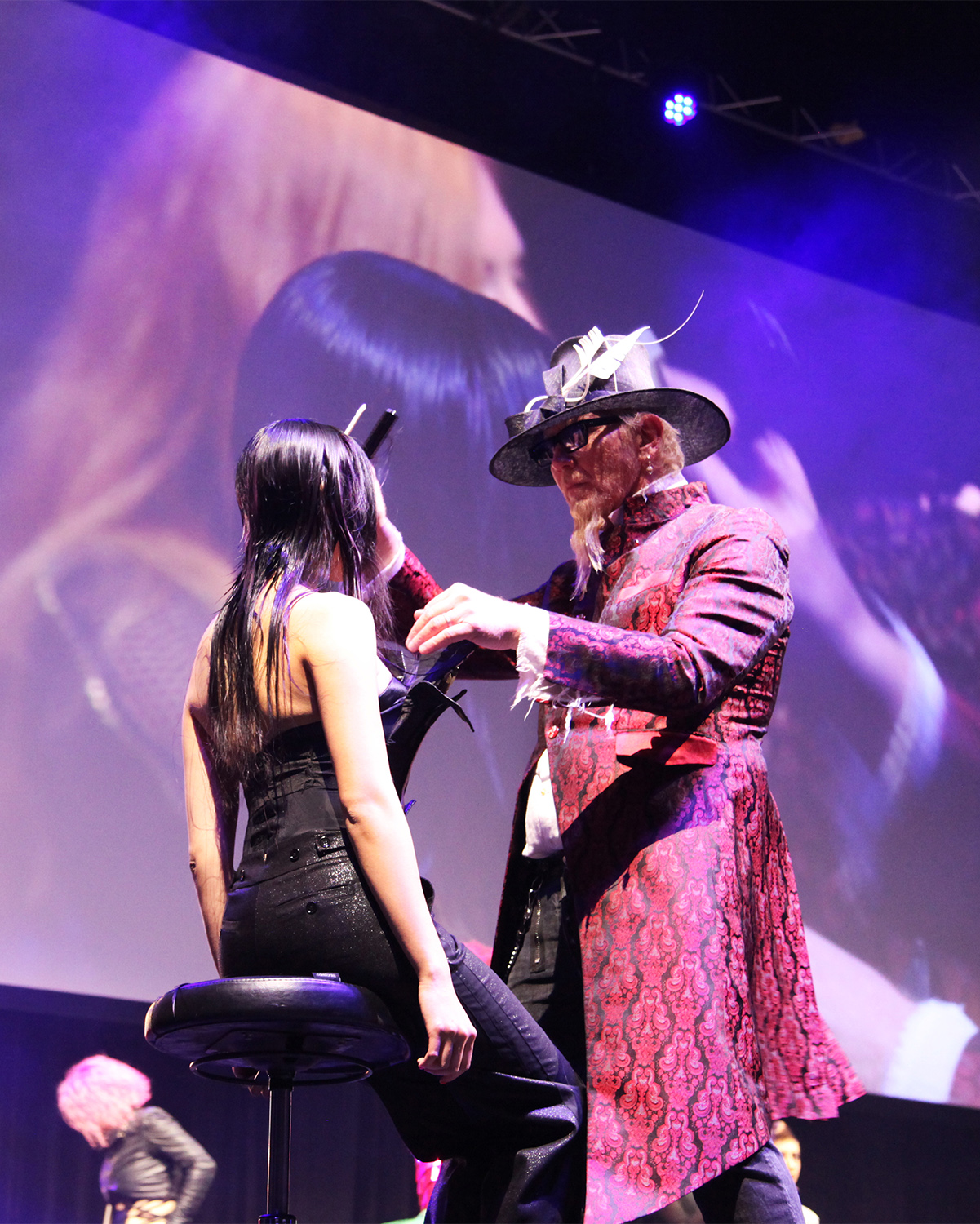
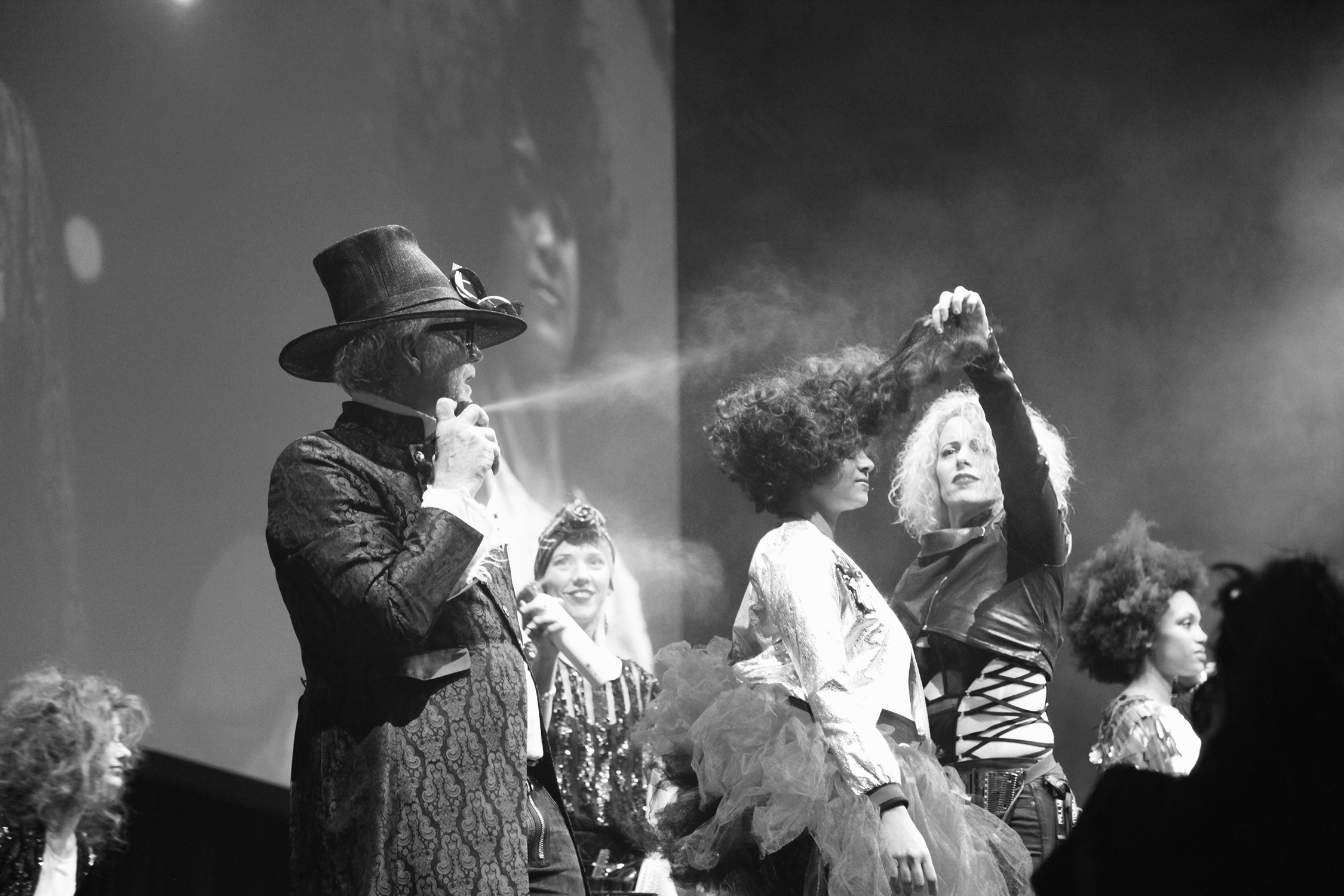
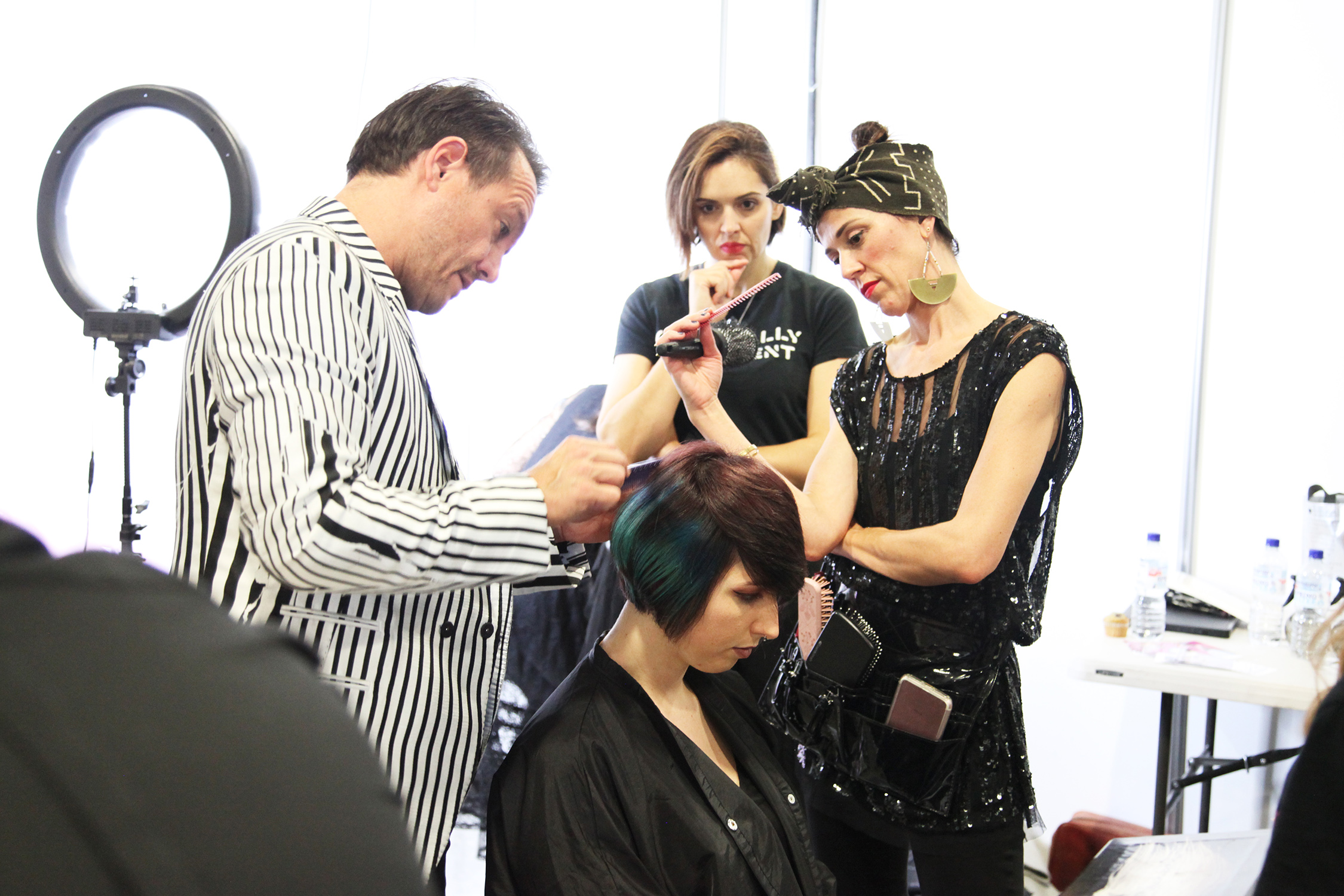
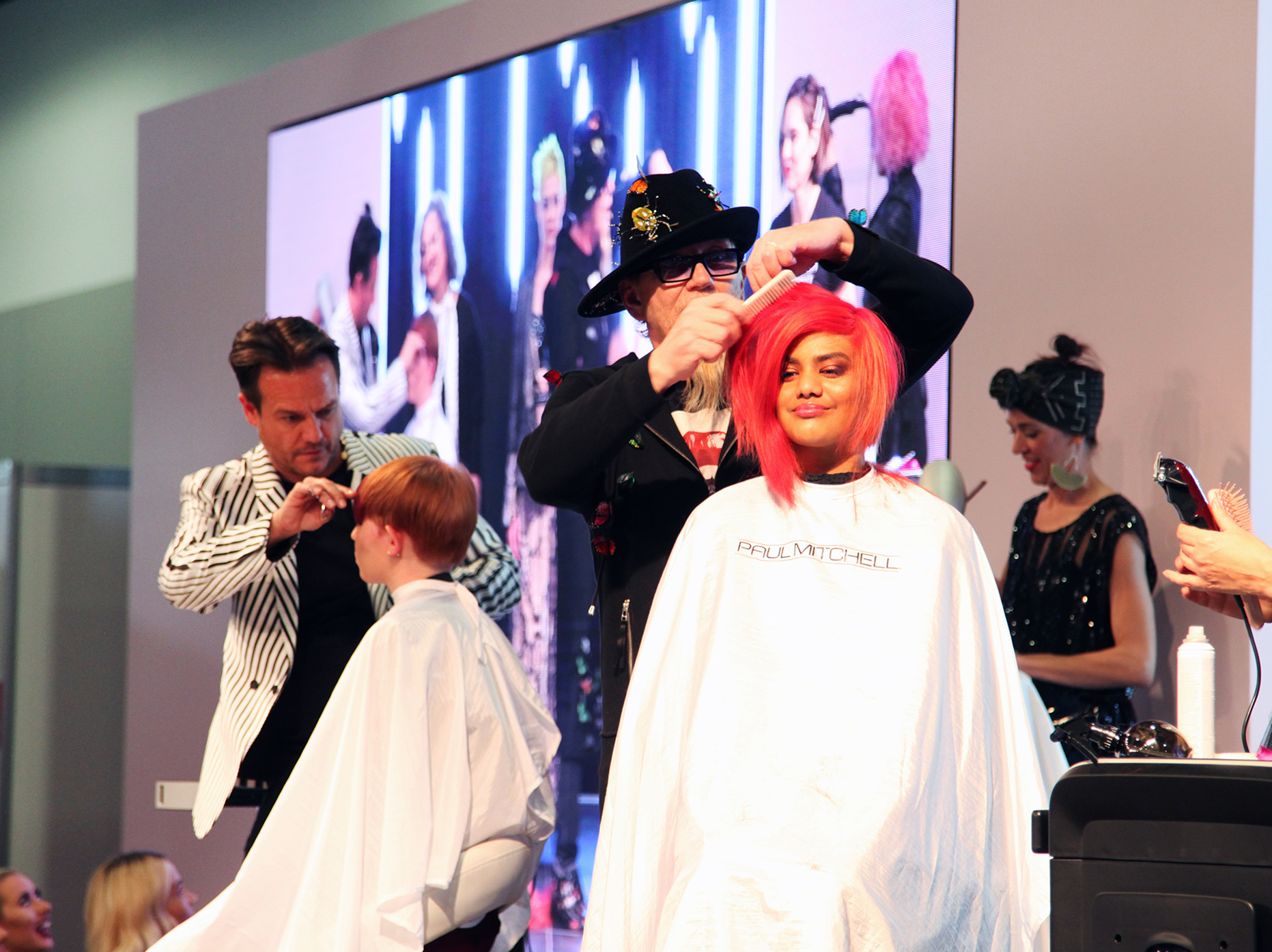
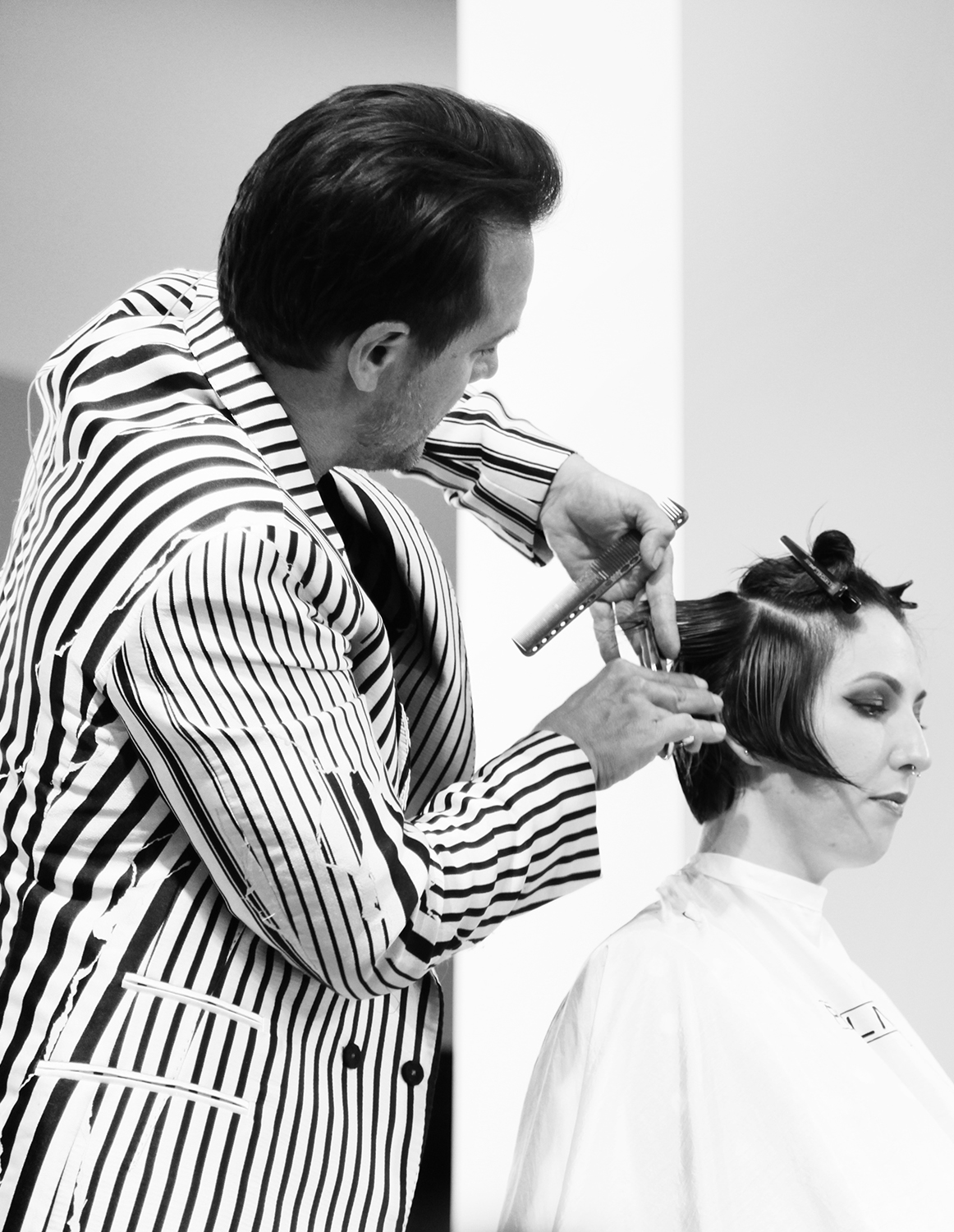
In conversation with Robert Cromeans and Angus Mitchell.
By hairdressers, for hairdressers. A sentiment so readily thrown around in our current market climate it’s hard to discern the experts from the charlatans.
In our age of chemist colours and planned (product) obsolescence only the most transparent will survive; those devoutly adhering to their scruples, brand values and a communal desire to enhance our industry with each and every launch or endeavour.
Those like Robert Cromeans and Angus Mitchell: two of the pivotal figures behind Paul Mitchell’s ever expanding industry stronghold. Both of whom continue to maintain humility, reliability and of course transparency, despite their growing scope and success.
Boasting a plethora of insights and acumen between them, these guys are the true brains behind the business – working tirelessly alongside Paul Mitchell Co-Founder John Paul DeJoria to preserve both the brand’s legacy and spirit of community.
Theirs is a brand built for hairdressers; from a growing, salon-centric product range right through to their emphasis on ongoing education and fostering of creative growth.
In town for a brief stint, we jumped at the opportunity to revel in their knowledge. Here, Robert and Angus talk quality hair care and environmental sustainability, the thrill of the stage and the importance of not taking yourself too seriously.
Hairdressers, take note.
TJ: How does it feel to be representing the Paul Mitchell brand here in Australia?
R:We’re so happy to be here together for the first time, meeting likeminded creatives and sharing our education with hairdressers from across Australia. We’re quite different in the ways that we approach things as hairdressers, and we’re excited for hairdressers here to experience our approach.
A: The last time I was in Australia, we were launching Mitch (our men’s range). John (Pizzey), our Australian distributor, is one of the most amazing people we’ve encountered and we feel really blessed to have him as our representative for Paul Mitchell in Australia.
TJ: What sustains your passion for the industry.
R:I’ve been doing this for thirty odd years now. I love hairdressers and being surrounded by people who really get what it is we do. Although we live in different countries we all have so much in common. People who encounter us quickly find we’re pure of heart and loving – we’re quite approachable. People always think there’s this big mystery around hairdressing but at the end of the day it’s about pleasing a guest, one at a time.
TJ: And for the Paul Mitchell brand?
R: It’s a brand built on trust and loyalty; one that’s true to its word. To give you an example of this, John Paul and Angus created a 350 year trust for the company [stipulating] that it will never be sold. They’ve succeeded to such a level that they’re grateful and the decision they made many years ago to support hairdressers is something they’re going to continue to do. That’s what keeps me loyal to this company. The reality of that says a lot in this world, where people keep changing their minds.
So many companies are being bought out. They all start off with the original message: ‘we’ll be here for you’ and often times they sell – which they have every right to. But it means a lot to me that we’re one loyal company that’s designated to hairdressers. We’re never going to supermarket or chemists. We’re going to work through salons and through our hairdressers. It’s also family company – which means a lot to me.
A: To add to the family aspect, John Paul’s daughter is now in the management and leadership role. She’s slowly moving into his position and is incredibly smart and bright. She’s thrifty and is looking towards the future; how we can really manage our business to constantly be at the forefront. If you’re not watching the dollars or planning ahead for the next five years… you’re planning to fail. It’s not just the passion that comes from me. I’m the heart and soul, and she is very much the analytical and the strategic and there’s many other pieces that form the business. It’s the belief and knowledge we have that really keeps us together.
R: I’ve always known we were building a legacy company. There’s no industry more lied to than that of the hairdressing industry. So it means a lot that we have a company that’s integral and we want to go further and not at the cost of anyone. If you want to open a salon and you have a dream, we want to help you make that happen. We have over 1000 educators worldwide that work for this company. We dominate in many arenas. We’re an answer for so many people, giving them that faith and something to believe in. I think it’s critical right now with all the changeovers.
TJ: Robert, you’re quite flamboyant with your stage presence… Talk us through your prep process.
R: Me and Elton John! I tend to envision myself sitting in the room as an audience member, as though I’m waiting for the show to happen. Then I start to work on the musical thread; that’s the next chapter (beyond the spoken component). I begin by visualising the show, thinking about the media decks, thinking about where the crowd is situated, and how I can build (the experience) around that.
TJ: You also take a lot of risks…
R: I think as an artist (much like a hairdresser behind the chair) its important you take some type of a risk. If I had to be judgemental of other artists that I’ve seen doing hair shows, I’ve found that they don’t take enough risks. Many of them tend to pre-cut or style before bringing things up on stage. We like to take a calculative risk so that we can create a lot of energy, transformation and a little bit of trickery. I use many different tricks… sometimes they don’t all work but that’s not a concern to me. There’s so much going on in our shows that even if one thing goes wrong, it won’t really compromise the way that the show works.
I always want for our shows to be a breath of fresh air. I’ve watched a lot of great artists but not every artist belongs on the stage. Sometimes watching hair being done is like a slow motion movie and with the new world of Instagram, you need to make a show run faster. My rule of thumb: the bigger the audience, the faster the show runs. It’s really one of those controlled chaos type things. Especially for the team; a lot of these people have never been on stage with us, but they’re going to trust in me because I know how to build [an experience] and make sure they’re safe. And they’re going to have the time of their lives! I put Angus at great risk sometimes which I think he enjoys. I’ve had him do many things…
TJ: …such as?
R: I saw a parody of Beyoncé’s ‘Put a Ring on it’ on Saturday Night Live and I thought this would be a great entrance for Angus and two of the other lads in the show. The team worked with a choreographer all day… they came out in pantyhose and leotards… I was about to explode with laughter. We used the original Beyoncé video and filmed it in the same way. You had to take a second look before you realised it was Angus. It brought the house down! I thought, only he would be so gracious to show he doesn’t take himself too seriously… and I think that’s something that many artists can learn from. So many artists take themselves so seriously and that’s just not who we are as a company. That’s not our culture. We’re nice people.
A: Just to be fair… I didn’t walk out on stage in the pantyhose and leotard.
R: He was on a 60 ft LED wall… (Editor’s note: we’re yet to see pictures).
TJ: Angus, Robert no doubt pushes you out of your comfort zone?
A: What I love most about Robert is his ability to push people to do more and be more. With me for instance, I’m quite comfortable working in a 30 minute cutting segment. But Robert says… “Okay Angus you have five minutes to do a hair-cut… you have twenty minutes to do three hair-cuts… don’t pre-cut. Just go out there and do the best you can.” Sometimes the best you can – and working with someone who’s really pushing through – really brings out the best in you. That’s what I love about Robert’s leadership in the company. It’s something that brings out more of my creative freedom.
When you’re working so precisely or trying to think about every little thing… the best advice he gives is that “No one’s going to come up on stage afterwards and cross check your work. Let’s not worry about the little details.” We then try to make sure everything has a nice clean outline, that it’s going to be creative and have that wow factor; that shock factor. For us it’s a true production from beginning to end and that’s something I’m really proud of.
R: Angus is very disciplined with his dexterity and skillset. There’s a saying ‘I might not be perfect but I’m perfect for you’. The same goes for hair. I might not cut hair perfectly, but my cuts are perfect for you. His combination of skills give him the total confidence to do anything, and that’s how I know I can stretch his ability. It’s not as though I’m taking somebody who’s never done this before and asking them to do a hair cut in four minutes… it would be impossible for many people.
TJ: Who inspired this approach?
R: His father (the late Paul Mitchell – the eponymous brand co-founder) is who brought out the crazy in me. His father also worked for Sassoon and had the tradition of being a precision cutter. Paul was a bit of a renegade. He would use balloons to set hair and come out with a model in rollers and pop the balloons. He would cut hair with medical tape, he would section hair, he would use a curve comb, he would use clippers – long before people would ever thing to use clippers on women’s hair. He was an ultimate showman.
When I was a kid in beauty school, I would see Paul Mitchell… and it set me free. It gave me the idea that there was nothing I couldn’t conceive in my mind that I couldn’t do just based on that mentorship. Many people – especially in this industry – are very controlled; told what to do, told not to think about it but just do what they’re told and I just think that Paul gave me a freedom that we embrace every day in the company. I want people to see this man’s beautiful legacy. Because we’re living it every single day.
TJ: Talk us through the Paul Mitchell culture/ethos.
A: There are so many facets to the Paul Mitchell brand. [Our culture] is what we stand for. We are a health brand, so the philanthropic charities we follow are all geared towards health and making the world a better place. We’re involved with PETA and have pulled products out of regions for practicing animal testing. We put our money where our mouth is and are afraid to make necessary sacrifices to make sure that are ethical standards are adhered to. If you’re someone who is passionate about the planet and want to make the world a better place, this is the brand for you.
Our company culture is centred around philanthropy and supporting the salon in the business sense – this is what Robert’s vision has been – and also our education, which we are very passionate about. Moving forward our goal is to be the number one colour company in the world. We’re not just making new products for the sake of making new products; we’re focusing on colour, education and continuing in our quest to make people aware of how important our beautiful planet is.
TJ: What are the solid points of difference with Paul Mitchell colour?
R: The scientific differences can’t be measured. For me, when I look at a salon, owner or stylist – I look at how I can make them sell more colour. Having different colour isn’t going to make you busier or more successful. It’s about helping them see the opportunity of colour – making them busier with colour. If I’m going to sell you more colour, I want the advantage to be that you’ll be selling more colour. The relationship between colour and cut is quite staggering. For every ten clients we see, the tenth client gets colour. If you can get that to one in five then you will absolutely double your revenue.
Whether you’re an individual stylist or multi salon owner, these are game changers. For me, I love chemical addiction. It’s about getting people addicted to that chemical experience. If you think about some of the biggest money makers in our industry, it’s not trend colour or metallics. It’s actually grey coverage! It’s dimensional blondes. The ways that you can help a hairdresser with dialogue and systems to be more successful – that’s what we’re talking about.
We promise to use the latest research to bring the greatest colours from around the world; we make a multitude of colour lines. Depending on what type of salon they are – whether grey coverage is important to them, or if its high lift, or if its working with crazy red tones – we’ve got something in there for everybody. It’s showing them a difference and what they can do with it. It’s not just selling different molecules. All colour companies lie the same way. What I want you to understand is that if you choose the right (colour) partner, we’re actually looking to help grow your business. No matter whether or not a salon wants to be more successful, it’s vital they desire to keep growing.
TJ: What are some of the common misconceptions that people have around salon ownership?
R: When I first told my family I wanted to be a hairdresser, they said I’d never make any money out of it. I think the misconception is that people don’t realise what success they can get involved in, and it’s when you hang out with other people you realise this. When I was in beauty school I didn’t realise there was such a job as a platform artist. When I tell my clients I travel to do hair shows they have no idea what that means. When you see it in action… you realise it’s something that most people would just love to do. You get to be a rock star without a guitar. People have no idea about the possibilities there are for hairdressers. The fact that I can do all of these things in my career… I had no idea until I met someone else who was doing all of these things.
TJ: Any specific qualities you believe that a hairdresser should possess?
R: The key ingredient: you have to love people. If you don’t love people then you shouldn’t be a hairdresser. I think of myself as being good at people. It’s my acquired skillset of working with people that helps me as a hairdresser. It’s not how smart you are, it’s how you’re smart. I’d rather have a personality than a skillset; for a client to enjoy sitting with me. We’ve got to be interactive. We’ve got to go above and beyond.
TJ: What are some of the issues you’ve observed in the salon sphere? And the solutions?
R: Right now we’re going through huge changes in the United States. There are so many new independent and freelance hairdressers, meaning a lot of big salons are closing. The whole world is changing. The centricity of customer service is what’s lacking. It’s not just about getting your hair done; its having an experience. I think that a lot of hairdressers forget that because they get stuck in the technicality, and forget their bedside manner. They forget what joy they can bring to a client. If a client is only coming in every four months, perhaps you didn’t make it fun enough the last time they were in to make them come every two months.
I don’t need thousands of clients, I just need 150 loyal clients who visit a certain number of times – what we call frequency of visit. Grey coverage clients are my favourite because they can come in up to twelve times a year. Barbershops have the highest frequency of visit – a male client can go in twenty times a year. It’s not about how many times they come in it’s about the ticket; the services they get. It’s about using business strategies. Our aim is to really help salons with their colour business. If your clients are dependent on your colour business, they’re going to be more loyal to your salon. It’s in your interest as a hairdresser and service provider to get these committed service issues happening. You’ve got to look at it as a strategy. A lot of it is in the words that we use; the dialogue. When you use the right words and put them into place, the clients love it. We want loyal clients for life.
One of my pet hates is walking past a salon and seeing clients unattended. The other day I saw a woman who looked bored to death. No one was interacting with her and the salon was not busy. She was just left there to process – she would have had more fun doing this at home. So we have to think about what we can do to help create an experience. That’s the part we have to look at as salon owners. At my salon we do something called ‘Sex and the Sink’; it’s the way that we shampoo hair. We call them wash houses, lather lounges. We do it in the dark. It is a sexy business. People love their shampoo. In the UK they call it a back wash; I like to call it a lather lounge. It’s all about the words we use to titillate people.
TJ: What’s next for the Paul Mitchell brand?
A: We’re just about to celebrate 40 years in business, in 2020. To be in the business, and to be just as successful as we have been… to be at 40, its really incredible. We just continue to get better and better. Education, formulation… we have our inhouse PIC lab and to have the hairdressers and chemists on premises it gives us the freedom to constantly make things better. It’s based in Santa Carina LA. We have out shipping and warehouse department and in that is our PIC. Across the road is the lab that makes all of our products. It’s all quite tight and allows us to have great communication. It’s a dream.
My son has just turned four and I’m watching him cut paper with his scissors… he’s predominately a leftie. But I’ve seen him use his right hands which means I can pass my scissors down to him. In a dream come true he [will follow in my footsteps] and that would be fantastic. We’re one of those unique companies. The way that JP and I have set the company, its set in stone. It’s not going anywhere. It’s going to remain private. We are the largest privately owned beauty business.
TJ: Any final words of wisdom?
R: A lot of brands make great products… but I think it’s about who you choose to believe in. I look at product lines like religion. You can look at all of them but you have to eventually just decide which one’s the right fit for you. As much as I’m the Global Art Director for Paul Mitchell, I’m still a customer; a powerful example of what you can do with Paul Mitchell – I take that very seriously. I’m not just a paid endorsement. The advice I give from the stage… I’m taking that same advice.
I think it’s very important that like-minded owners can see value in certain things that make a business run too. Not just the art side of things. With Instagram and platforms such as social media, it’s so easy to get the art now. The elements that seem to be missing: the business elements. From how we charge to the service attitudes we have. These are critical things that we can make a difference with. These are also things that make people more inclined to want to align with a product company. It’s not just the product; it’s what it stands for.
Visit: www.paulmitchell.com